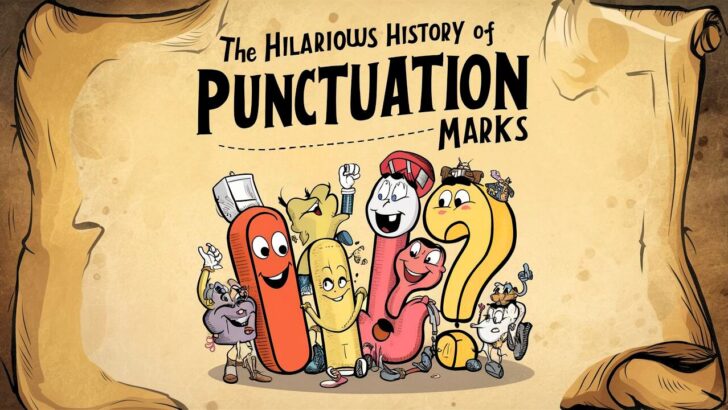Imagine reading a text with no full stops no commas no question marks just an endless stream of words how would you make sense of it all Welcome to the world before punctuation a chaotic realm where readers struggled to catch their breath and writers pulled their hair out in frustration But fear not for over centuries a band of unsung heroes emerged armed with dots dashes and squiggles to rescue our sanity These mighty marks the period the comma the exclamation point and their punctuation pals have a tale to tell that’s as dramatic as any bestselling novel From ancient stone carvings to medieval manuscripts from printing presses to emoji-filled text messages join us on a thrilling journey through time as we uncover the secret life of those tiny symbols that wield enormous power in our everyday communication Buckle up language lovers it’s time to put punctuation in the spotlight (See what I did there?….Let’s go back to normal now, though, shall we?).
The Dawn of Dots and Dashes
Our punctuation journey begins in ancient times, when writing was a luxury and clarity was… optional. The ancient Greeks, ever the innovators, introduced the paragraphos – a simple line used to separate ideas. Think of it as the great-great-grandfather of the paragraph break. Meanwhile, the Romans, not to be outdone, sprinkled their stone inscriptions with interpuncts (·) to separate· words· like· this.
But the real punctuation revolution kicked off in the Middle Ages. Picture a dimly lit monastery, where dedicated monks hunched over parchments, squinting at religious texts. These unsung heroes of syntax realized that reading aloud was a lot easier with some well-placed pauses. Thus, the period (.) and comma (,) were born, bringing order to the chaos of continuous script.
The Question Mark’s Curious Quest
Ever wondered about the question mark? This curvy character made its debut in the 8th century. Legend has it that it evolved from the Latin word “quaestio” (question), abbreviated as “qo”. Over time, the “q” migrated above the “o”, eventually morphing into the “?” we know and love today. Talk about a glow-up!
Printing Press: The Great Punctuation Equalizer
Fast forward to the 15th century, when Johannes Gutenberg’s printing press hit the scene. Suddenly, books weren’t just for the elite, and punctuation needed to step up its game. Enter Aldus Manutius, a Venetian printer with a passion for clarity. He introduced the semicolon (;) and refined the use of the comma, giving writers more tools to fine-tune their prose.
Exclamation Points, Quotation Marks, and Modern Marvels
The exclamation mark (!) burst onto the scene in the 18th century, adding a dash of excitement to written language. Quotation marks emerged in the 17th century, finally giving writers a way to say “I’m quoting someone here!” without, well, saying it.
In the digital age, punctuation has taken on new life. The humble hashtag (#) went from denoting numbers to launching social movements. And let’s not forget about emoticons and emojis – the new kids on the block, adding layers of meaning with just a few pixels.
Cultural Punctuation Surprises
As you journey through the world of languages, you’ll encounter some punctuation plot twists. Spanish keeps readers on their toes with inverted question marks (¿) and exclamation points (¡) at the beginning of sentences. German writers embrace „different quotation marks”, while the French «prefer these».
The Interrobang: Punctuation’s Rebel Child
In 1962, ad man Martin Speckter decided punctuation needed a shake-up. His creation? The interrobang (‽) – a mash-up of the question mark and exclamation point. While it never quite hit the big time, it remains a beloved oddity in the punctuation world.
Punctuation: The Unsung Hero of Clear Communication
From humble beginnings as breath marks for monks to the complex system we use today, punctuation has been on quite the adventure. These little marks wield incredible power, turning “Let’s eat grandma” into the much less alarming “Let’s eat, grandma.”
So the next time you tap out a text or craft an email, take a moment to appreciate these tiny titans of text. After all, they’ve been working hard for centuries to make sure your message comes across loud and clear – period!

Hey fellow Linguaholics! It’s me, Marcel. I am the proud owner of linguaholic.com. Languages have always been my passion and I have studied Linguistics, Computational Linguistics and Sinology at the University of Zurich. It is my utmost pleasure to share with all of you guys what I know about languages and linguistics in general.

